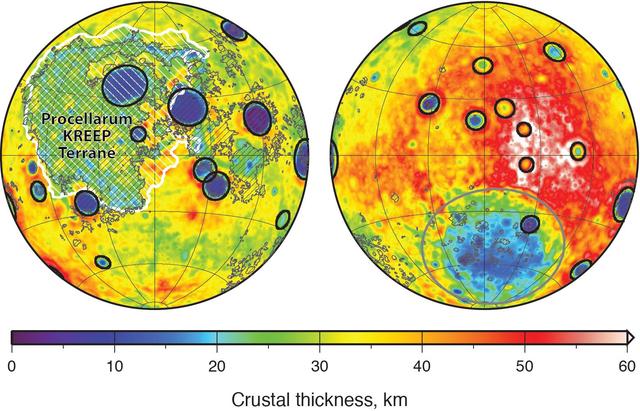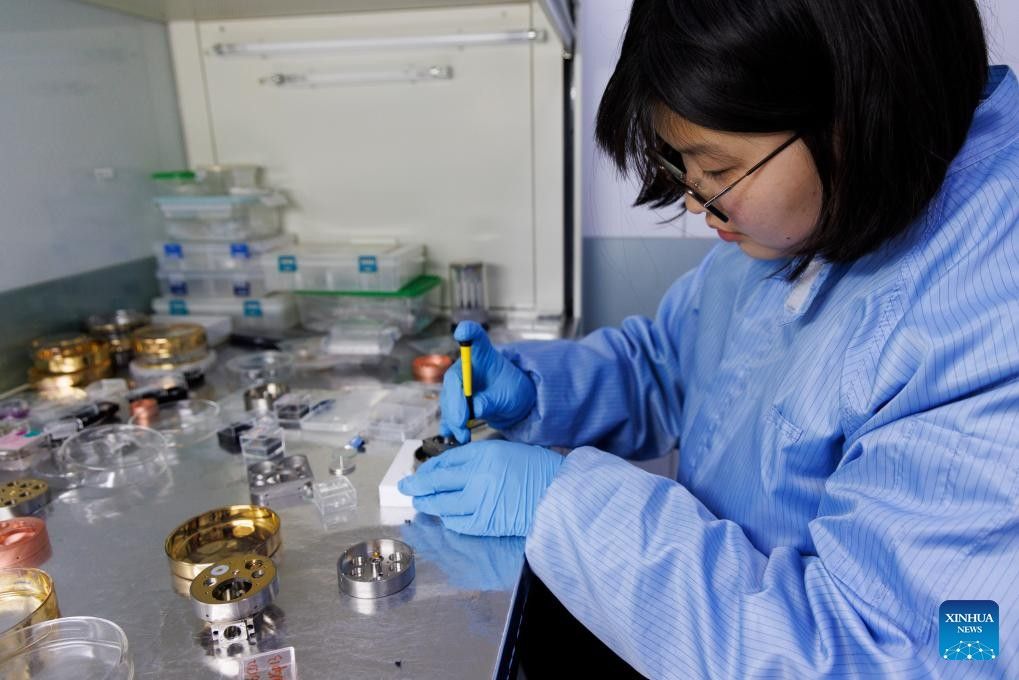On April 21, 2025, China’s Chang’e-6 mission made history by returning 1,935 grams of lunar soil from the far side of the Moon – the first time any material has been retrieved from this remote hemisphere.
The spacecraft touched down in the South Pole – at Aitken Basin, one of the oldest and deepest craters in the solar system, and extracted a payload that’s already reshaping scientific understanding, revealing a much longer volcanic history on the Moon’s far side.
“The Chang’e-6 samples provide a unique opportunity to study far-side volcanism,” said Qiu-Li Li, planetary scientist at the Chinese Academy of Sciences.
Mission Background: What Is Chang’e-6?
Chang’e-6 is part of China’s ambitious lunar exploration program, named after the Chinese moon goddess Chang’e. The mission launched on May 3, 2024, atop a Long March 5 rocket, with the goal of collecting and returning samples from the Moon’s far side – a feat never attempted before.
Following its complex trajectory, the spacecraft entered lunar orbit, landed autonomously in early June 2024, and spent several days collecting samples using a robotic drill and scoop. The sample capsule then blasted off from the lunar surface, docked with the orbiter, and returned to Earth for a precision landing in Inner Mongolia in April 2025.
Chang’e-6 follows the success of Chang’e-5, which returned samples from the Moon’s near side in 2020. Together, they form the backbone of China’s effort to build a complete geological map of the Moon and lay the groundwork for future crewed exploration.
Historic Delivery: 1,935 Grams from the Moon’s Hidden Hemisphere

In April 2025, Chang’e-6 successfully returned the first lunar soil ever brought back from the hemisphere that never faces Earth. Chang’e-6 landed in the South Pole, Aitken basin (left) and scooped up about 4¼ pounds (1,935 grams) of rock and dust. Analysis of the samples has stunned scientists: they include basalt fragments dated to roughly 2.8 billion and 4.2 billion years old.
Such ages imply that far-side volcanism persisted for at least 1.4 billion years during the Moon’s early history – evidence that volcanism on the far side lasted far longer than previously believed. These findings contradict the long-standing theory that the Moon’s far side, with its thicker crust, was geologically dormant.
“These samples challenge the idea that the far side was volcanically dead,” noted Professor Xu Yigang of the Chinese Academy of Sciences. “They provide the best opportunity to investigate lunar hemispheric differences.”
Why the Far Side Is So Different

Thanks to the retrieved rocks, detailed studies by Chinese teams are now illuminating the volcanic history of this distant side of the Moon. The Moon’s near and far sides are famously asymmetrical:
- Near side: Thinner crust (~60 km on average), over 30% covered in mare basalts (dark volcanic plains).
- Far side: Significantly thicker crust (~100 km on average), less than 2% mare basalt coverage (as the thick crust prevents magma from easily reaching the surface).
The new samples suggest the difference may be more about mantle chemistry than crust thickness. The distinct chemical signatures of the two basalt ages imply different magma sources from deep within the Moon. “It’s not just about crustal thickness,” said a lead geochemist on the mission. “These basalts tell us that the mantle beneath the far side may be very different.”
Analysis of the Retrieved Lunar Samples

All sample preparation and analytical procedures, including Scanning Electron Microscopy (SEM), Electron Microprobe Analysis (EMPA), and Secondary Ion Mass Spectrometry (SIMS), were carried out at the Institute of Geology and Geophysics, Chinese Academy of Sciences, in Beijing.
These advanced techniques were used to examine the samples’ microstructures and chemical compositions in detail. Researchers conducted isotopic dating and compositional analyses on basalt fragments, revealing two distinct volcanic episodes:
- Approximately 4.2 billion years ago: A high-aluminum basalt fragment suggests early volcanic activity on the Moon’s far side, originating from a KREEP-rich (potassium, rare earth elements, and phosphorus) mantle source.
- Approximately 2.8 billion years ago: The majority of the basalt fragments date to this period, indicating a prolonged volcanic history. These basalts derive from a KREEP-poor mantle source, suggesting diverse magmatic processes over time.
The 2.8-billion-year-old basalts exhibit a unique composition not observed in near-side samples, underscoring the geological diversity between the Moon’s hemispheres. Of the recovered basalt fragments, virtually all cluster around 2.8 Ga, with one standout 4.2 Ga sample – the oldest precisely dated lunar rock returned to Earth. These two generations of lava are chemically distinct, meaning they came from different sources of molten rock deep in the Moon’s mantle.
The findings challenge the long-held view that the far side’s thick crust completely stifled volcanism. Even near the Chang’e-6 site, scientists found surprisingly few large lava flows, suggesting that other factors (like mantle composition) limited far-side eruptions. As Professor Xu Yigang of the Chinese Academy of Sciences puts it, the Chang’e-6 rocks “provide the best opportunity to investigate lunar hemispheric differences”.
Water Scarcity on the Far Side: A Dry Surprise

In Beijing’s labs, researchers are carefully sifting the Chang’e-6 soil. Early results show the far-side rocks are exceptionally dry. As the lead geologist, Hu Sen, noted, “Even the driest desert on Earth contains around 2,000 parts per million of water – over a thousand times more than what’s found on the lunar far side surface”. Precise measurements indicate under 2 micrograms of water per gram of far-side basalt.
In other words, the hidden hemisphere’s mantle is nearly bone-dry. This confirms a striking difference from samples from the Earth-facing side, which can contain up to 200 ppm of water. NASA astromaterials curator Francis McCubbin calls the new water analysis “a landmark study on the water abundance of the lunar far side”. This makes far-side basalt among the driest extraterrestrial materials ever studied, with major implications for future human missions.
What This Means for Lunar Exploration

So, what does this discovery imply? In practical terms, the far side will offer far fewer in situ water resources for future bases than the nearside. This resource contrasts reflect the Moon’s well-known two-faced nature. On the near side, vast lava plains (mare basalt) cover over 30% of the surface, while mare basalts are nearly absent (<2%) on the far side. For comparison, even the driest desert on Earth contains over a thousand times more water. You can read more about how lunar geology differs from Earth’s in another deep-dive.
This asymmetry helps explain the dryness and geological differences. Yet scientists are excited about what the Chang’e-6 samples will teach us. As planetary geologist Kerri Donaldson Hanna (Univ. of Central Florida) remarked, “We all dream as lunar scientists to get samples from the farside”.
We also gathered important geology breakthroughs, learning that volcanism lasted longer and occurred in more diverse regions than previously thought. The Moon’s early internal evolution also appears more complex and uneven than models predicted. This information is critical for planning sustainable lunar bases in the future, a key goal for future international missions.
A New Era of Lunar Science
Chang’e-6 marks a turning point in our ability to study the Moon directly. And more missions are coming. “Upcoming missions are going to so many new and unique places on the lunar surface…It’s a great time to be a lunar scientist,” said Kerri Donaldson Hanna, planetary scientist at the University of Central Florida, and her sentiment is echoed across the space science community. The Moon, it turns out, still holds many secrets, and we’ve only just begun to uncover them.
Each new sample reveals more clues about the Moon’s formation and evolution – and, “The more we look at the Moon,” said geologist Clive Neal, “the more we realize how little we know.” As Chinese labs continue to analyze the Chang’e-6 haul, international lunar missions, including NASA’s Artemis program and robotic missions from Europe and India, are preparing to explore new sites across the lunar surface.
China is also gearing up for a series of ambitious lunar missions, aiming to establish a permanent base on the Moon and land a crew of taikonauts there by the end of the decade. The far side, once out of reach, is fast becoming the next frontier for humanity to explore.